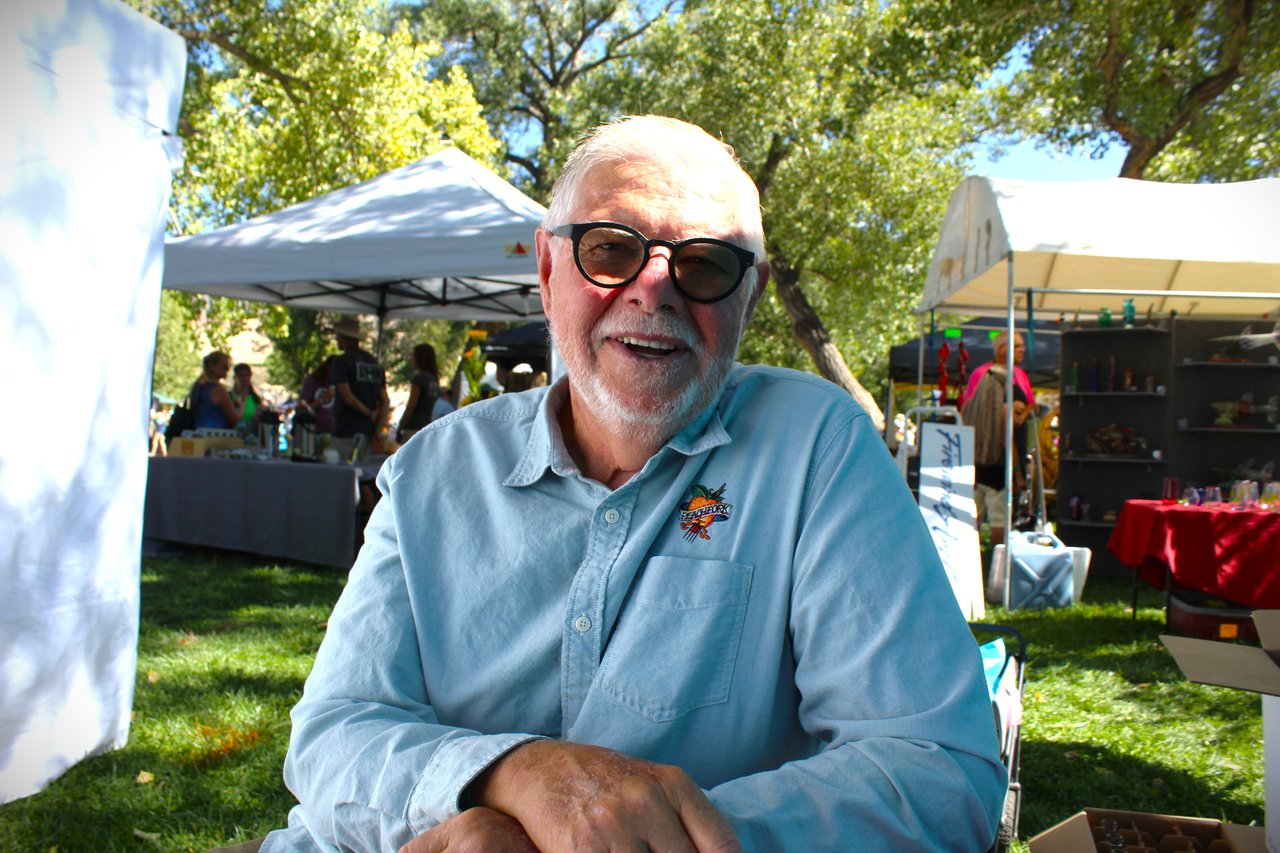PALISADE, Colo. (CN) — Susan Patton’s mom loved the red cabernet sauvignon grapes that grow in front of the family home in Palisade, Colorado.
She loved them so much, in fact, that in 1992 she convinced Susan and her husband Phil to buy adjacent land to plant acres of grapes, as well as the region’s famed peaches, apples and pears. They sold fruit under the name Peachfork Orchards & Vineyards.
By trade, Phil and Susan were both mining engineers. They later taught at Montana Tech. But Phil had always loved wine and “zigzagged through life” learning the craft, the 72-year-old said in a recent interview, speaking with a twang that gave away his Western Kentucky childhood.
After retiring in 2016, the couple turned to winemaking full time. This year’s batch of Pear Apple Plateau, made from ugly, unsellable orchard fruit, won double gold from the state’s annual Governor’s Cup competition.
Earlier this month, at the 32nd annual Colorado Mountain Winefest in Palisade, Phil sat in the shade behind Peachfork’s booth and waxed poetic about his philosophy on wine.
“The first thing is, you need to have good wines,” he said. ”Then you need to be friendly, and hopefully you get a relationship with people so they'll come back.”
Amid a landscape of mesas, Winefest is held on the banks of the Colorado River — the same river which sustains the wine grapes grown nearby. This year’s festivities drew around 5,000 connoisseurs, day drinkers and designated drivers, highlighting Colorado’s growing footprint on the wine-making map.
Winemaking in Colorado dates back to the state’s early decades, when homesteaders in the 1890s first started planting grapes. Prohibition in the 1920s killed the budding industry before it could truly fruit.
A comeback began in the 1960s, when dentist-turned-winemaker Gerald Ivancie imported grapes and viticulturist Warren Winiarski from California. A growing demand for the fermented beverage has brought a boom in recent decades. In 1990, there were only five wineries in the state. Today, there are more than 160.

During the 2021-2022 growing season, Colorado winemakers sold more than 206,000 cases of the stuff — adding up to about 2% of all wine sold in the United States. That’s on top of other homegrown alcohol industries like sake, spirits and mead.
While that figure might seem like a drop in the barrel, the rapid growth highlights Colorado’s unique and increasing role in American winemaking, particularly when it comes to pioneering innovative grapes. In 2021, vineyards brought over $41 million to the state, while the broader wine industry generated $79.3 million, according to an economic impact report from that year.
In Colorado, most wine grapes are planted in two regions recognized as American Viticultural Areas: the Grand Valley AVA along the rugged western slope of the Rockies and the wooded West Elks AVA in central Delta County.
At first glance, they might seem unlikely places to grow wine. Farmers must cope with high altitudes, relentless UV radiation and unpredictable temperature swings. Climate change and the Colorado River’s uncertain future only add to the challenges.
But where naysayers see difficult growing conditions, boosters of Colorado wine see opportunity. All agricultural products, and especially wine, are said to be shaped by the unique “terroir” in which they are grown.
With long days of sunshine, alkaline soils, whipping winds and altitudes of up to 7,000 feet above sea level, the terroir in Colorado’s winegrowing regions is certainly unique. Growers also credit the arid climate with keeping pests at bay, reducing the need for pesticide. Nutrients shed by local peach trees naturally fertilize the soil for trellises of grapes.












